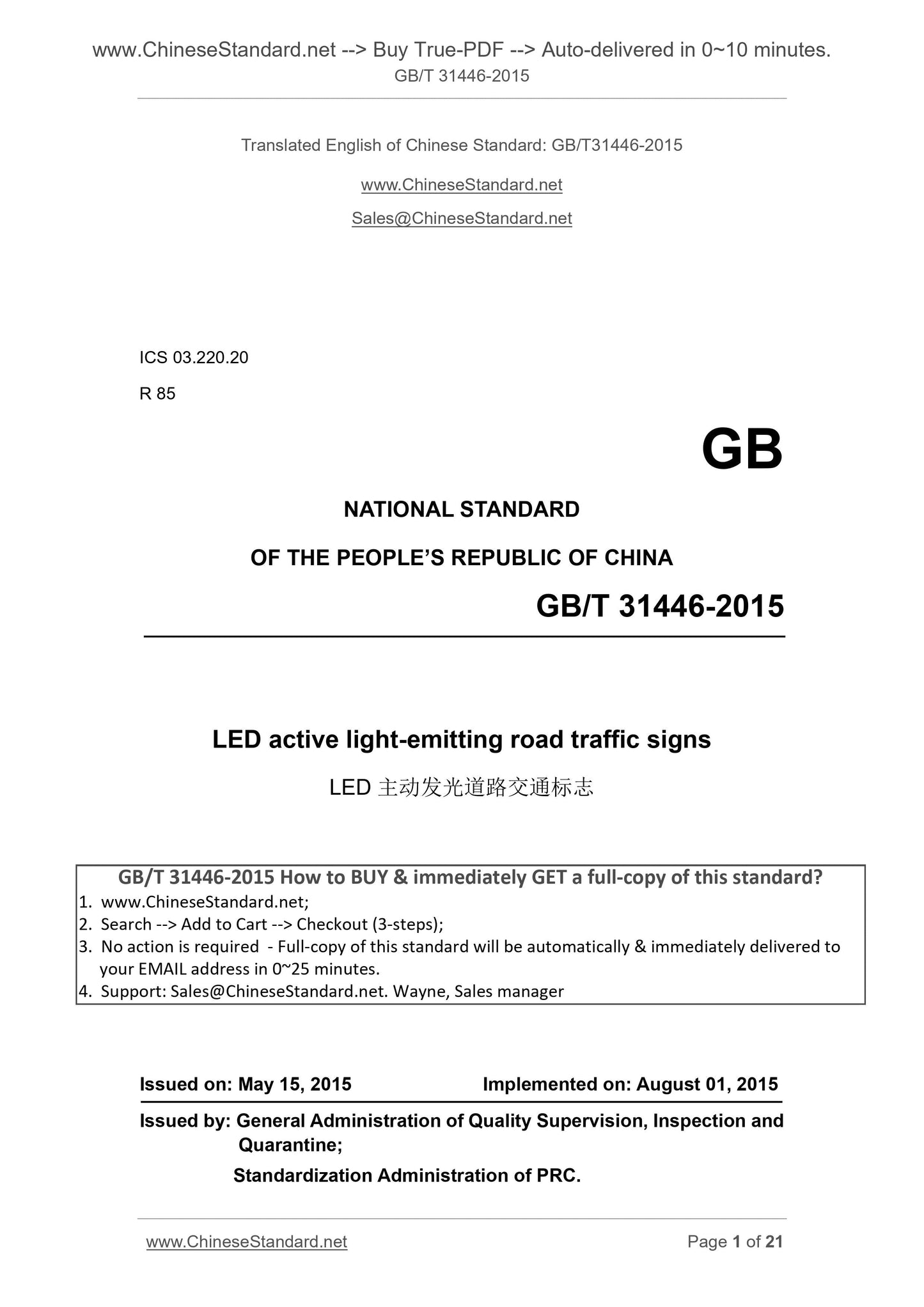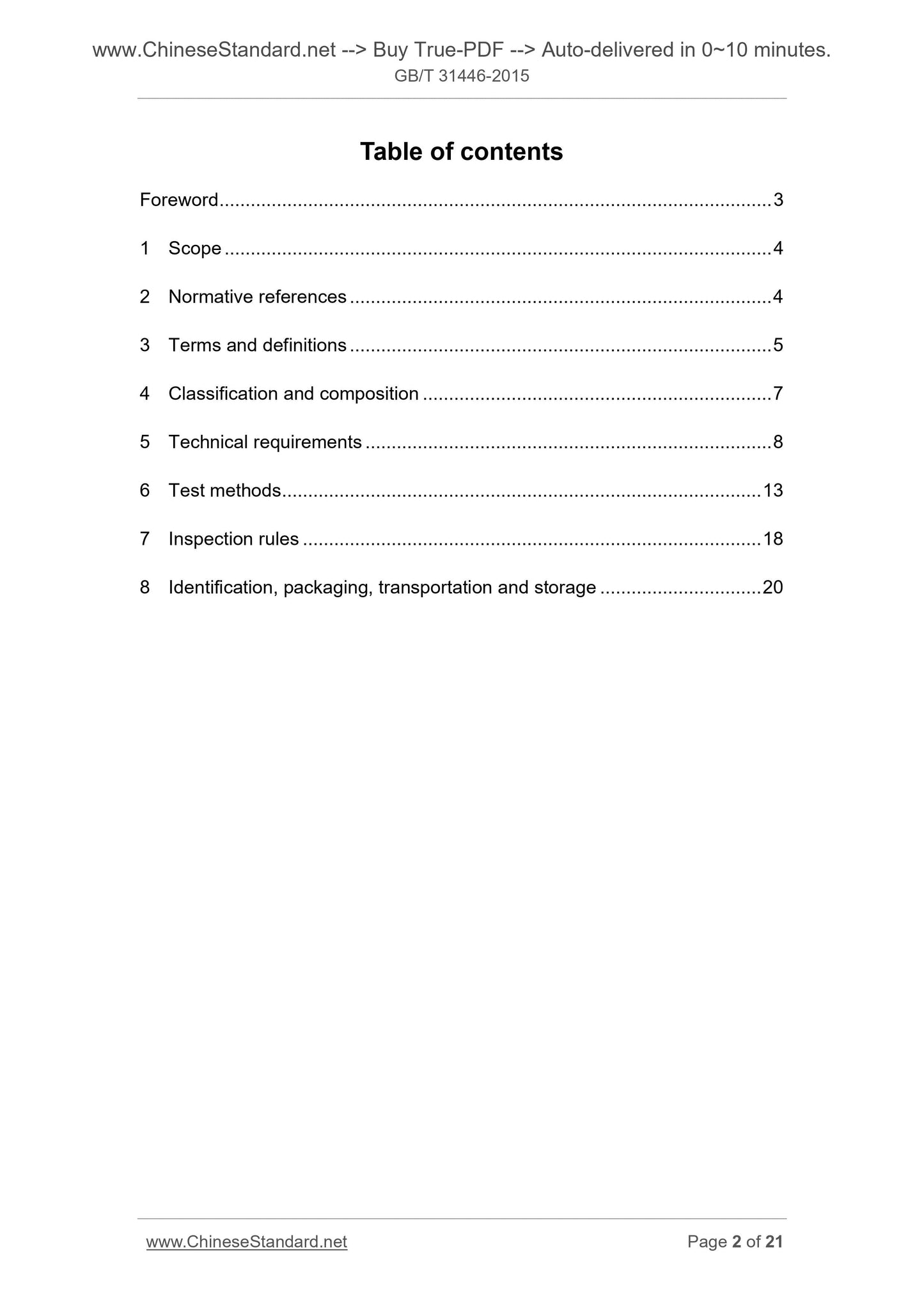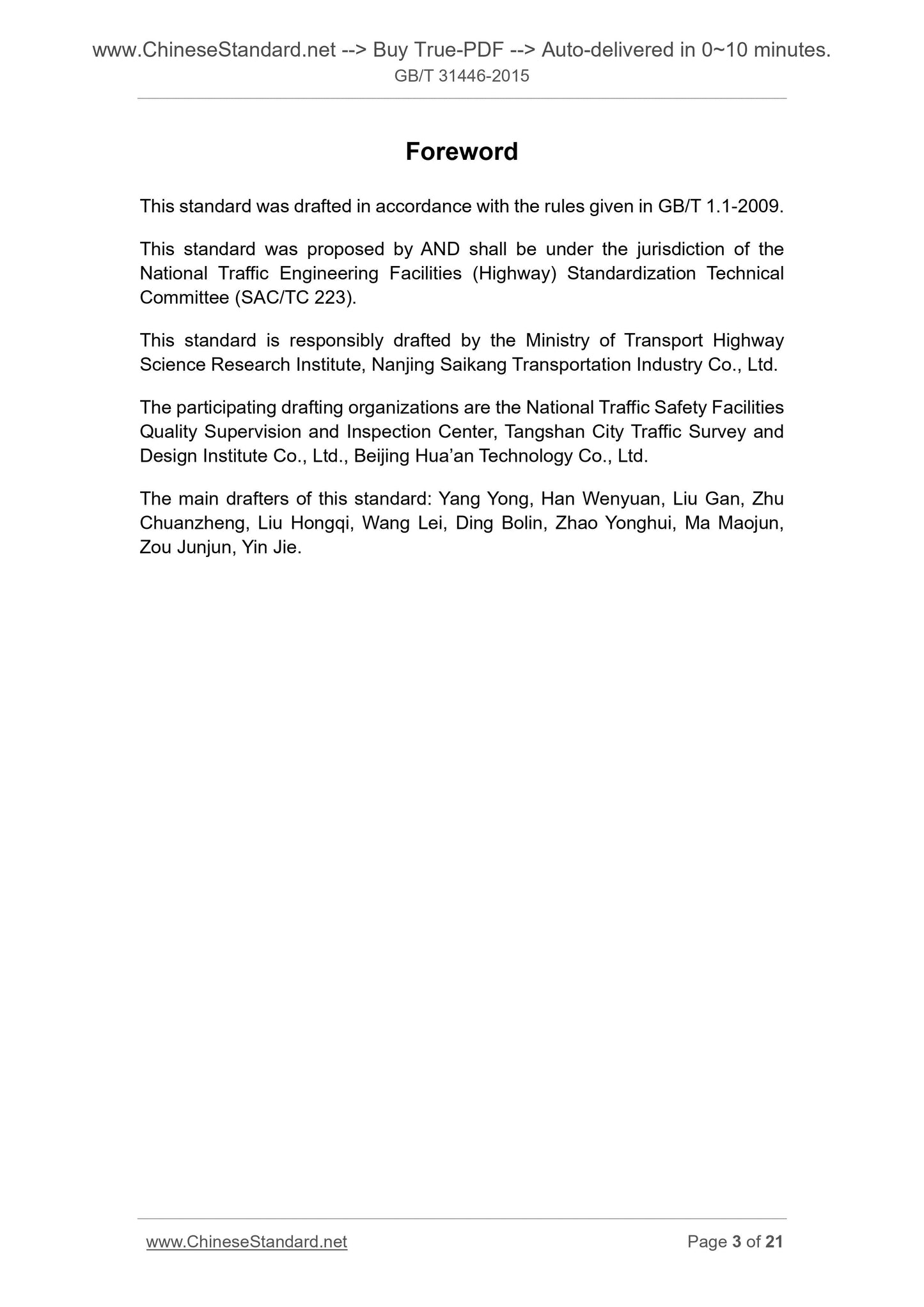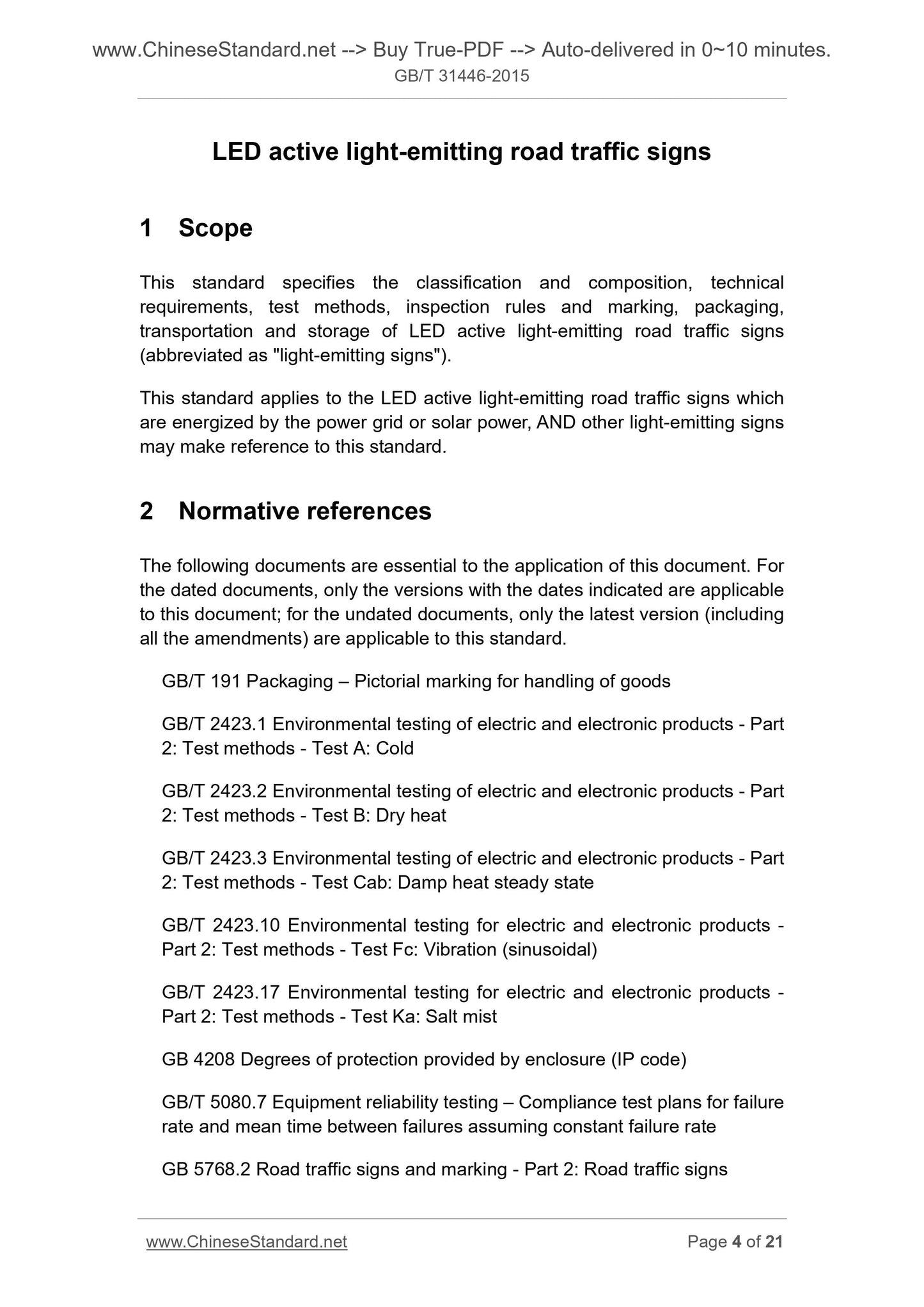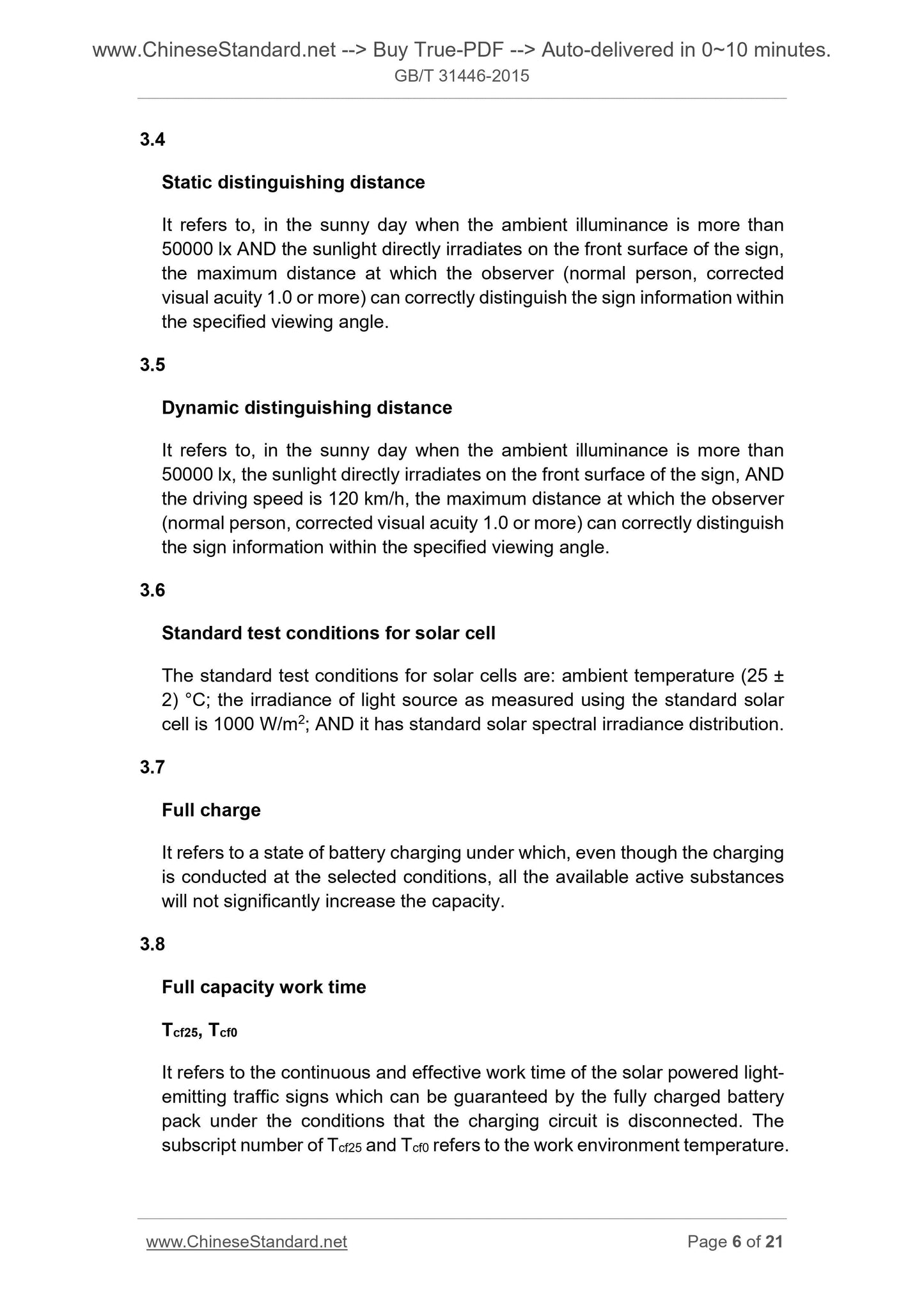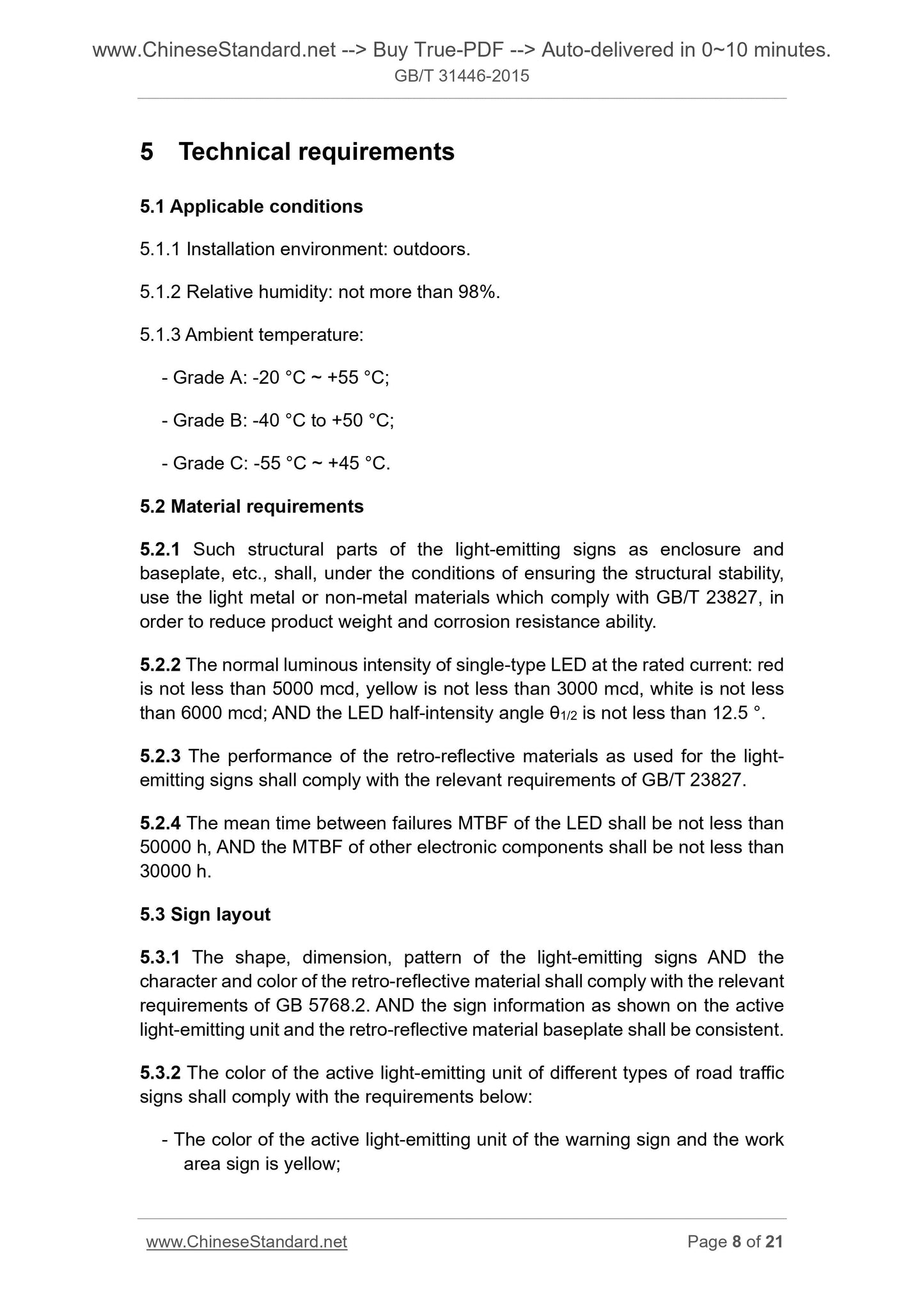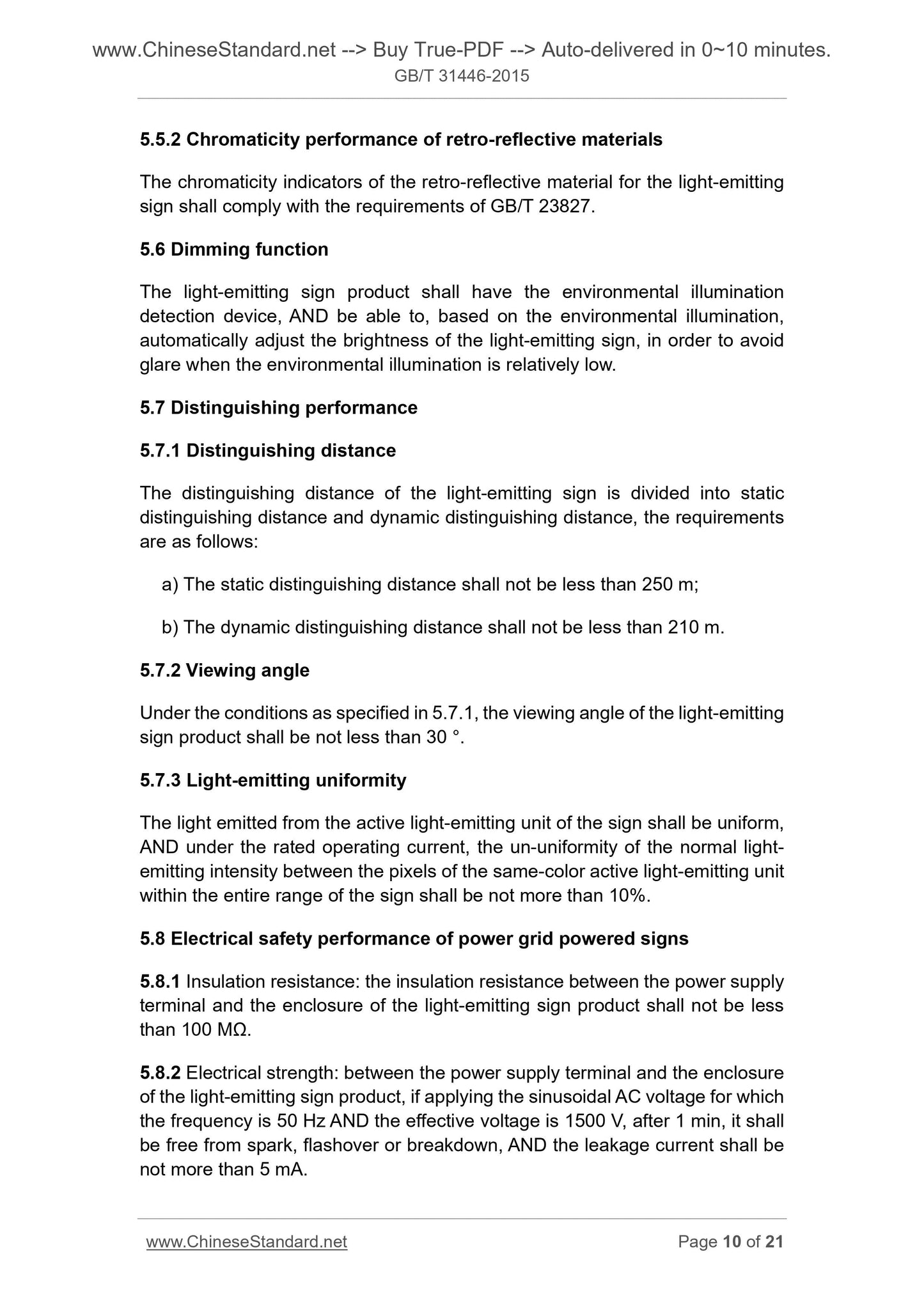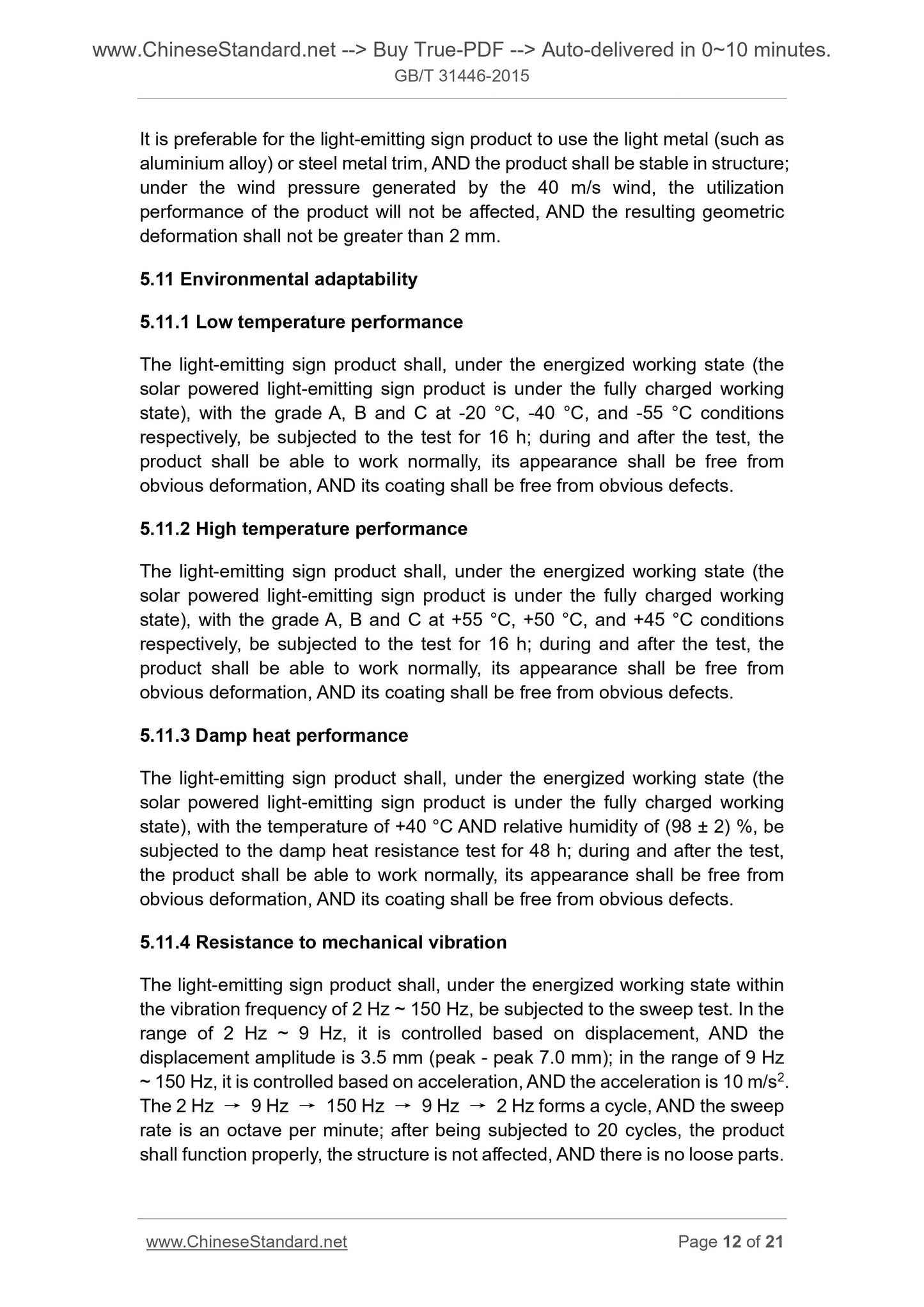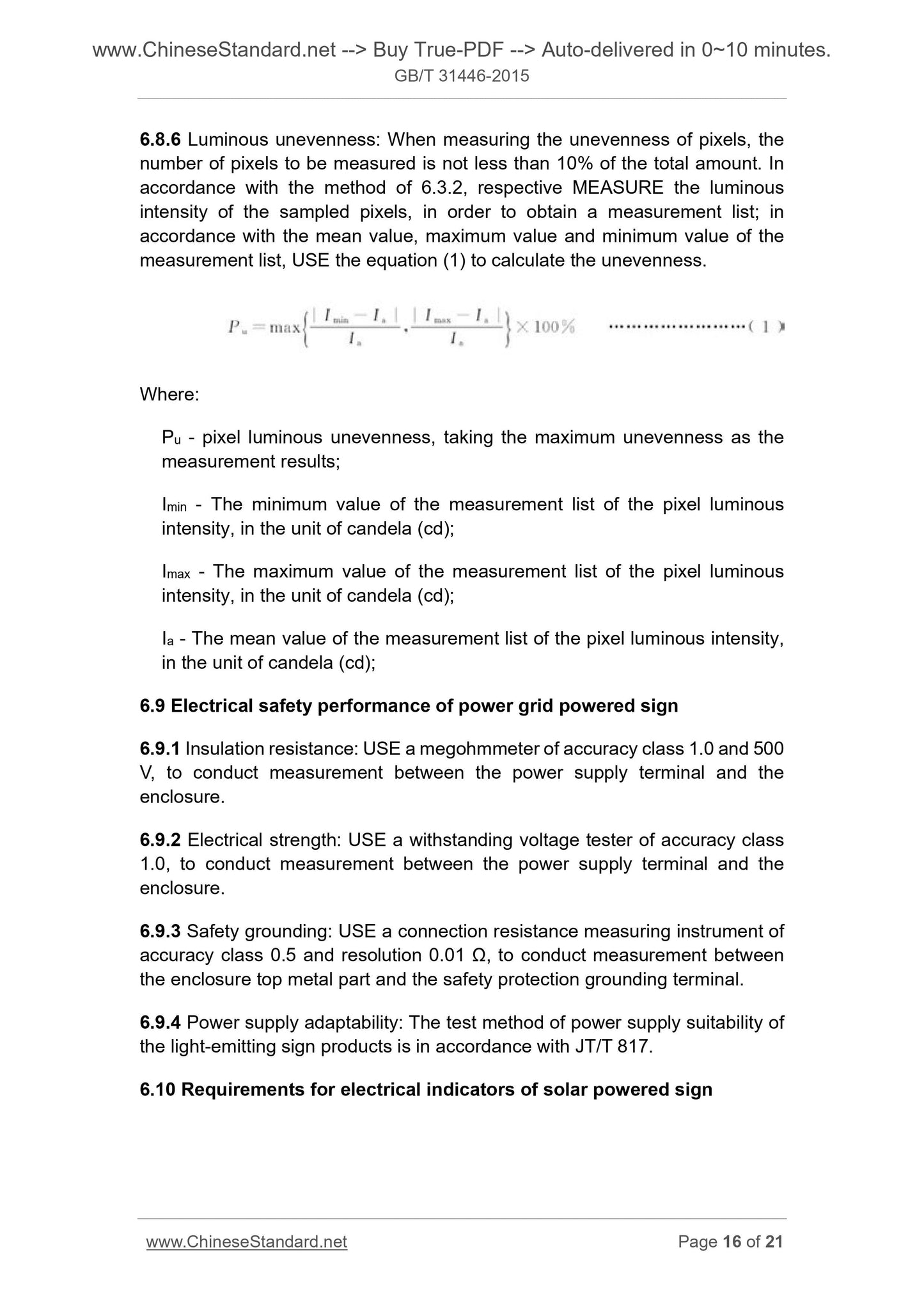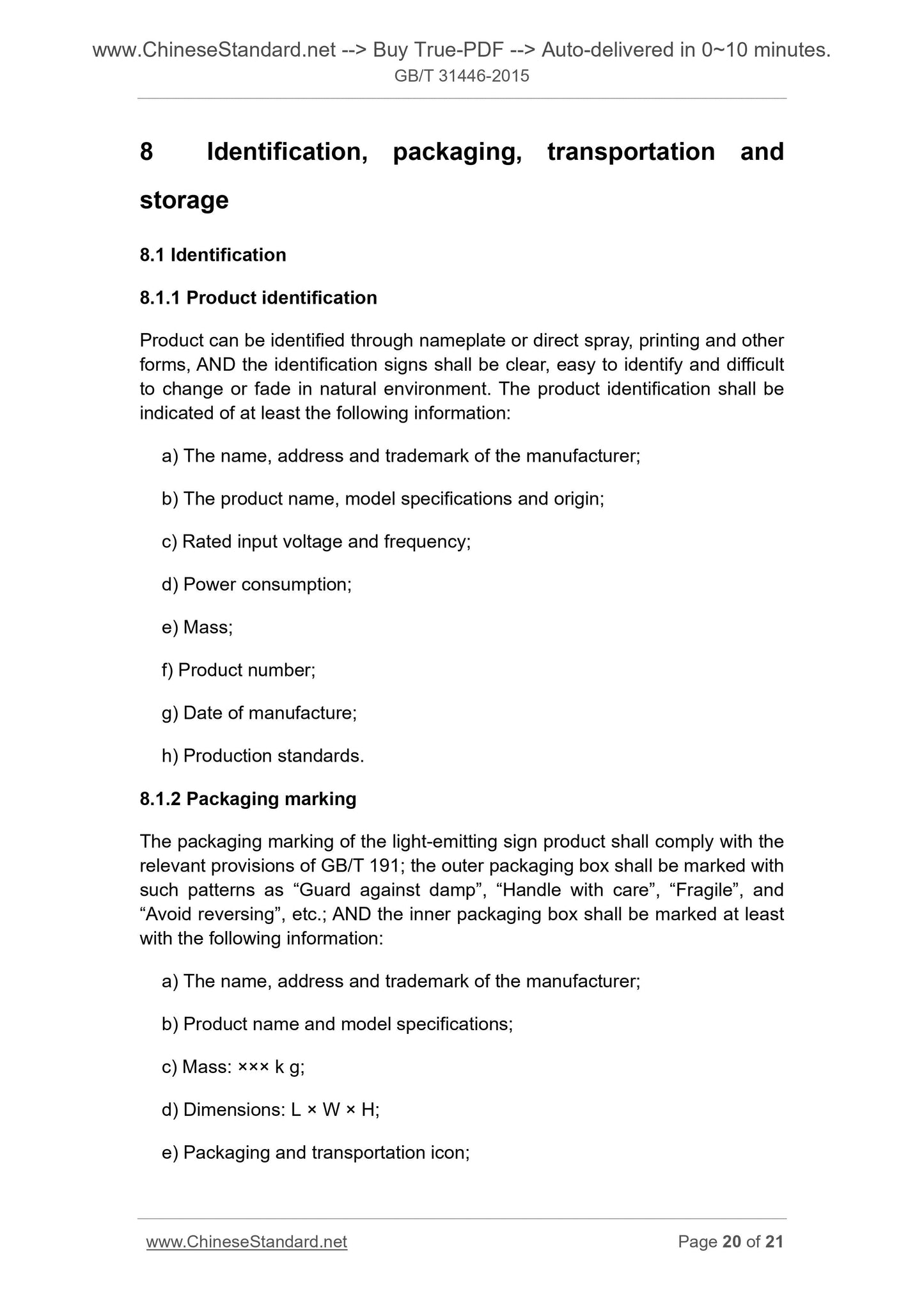1
/
of
10
www.ChineseStandard.us -- Field Test Asia Pte. Ltd.
GB/T 31446-2015 English PDF (GB/T31446-2015)
GB/T 31446-2015 English PDF (GB/T31446-2015)
Regular price
$130.00
Regular price
Sale price
$130.00
Unit price
/
per
Shipping calculated at checkout.
Couldn't load pickup availability
GB/T 31446-2015: LED active light-emitting road traffic signs
Delivery: 9 seconds. Download (and Email) true-PDF + Invoice.Get Quotation: Click GB/T 31446-2015 (Self-service in 1-minute)
Newer / historical versions: GB/T 31446-2015
Preview True-PDF
Scope
This standard specifies the classification and composition, technicalrequirements, test methods, inspection rules and marking, packaging,
transportation and storage of LED active light-emitting road traffic signs
(abbreviated as "light-emitting signs").
This standard applies to the LED active light-emitting road traffic signs which
are energized by the power grid or solar power, AND other light-emitting signs
may make reference to this standard.
Basic Data
| Standard ID | GB/T 31446-2015 (GB/T31446-2015) |
| Description (Translated English) | LED active light-emitting road traffic signs |
| Sector / Industry | National Standard (Recommended) |
| Classification of Chinese Standard | R85 |
| Classification of International Standard | 03.220.20 |
| Word Count Estimation | 14,196 |
| Date of Issue | 2015-05-15 |
| Date of Implementation | 2015-08-01 |
| Quoted Standard | GB/T 191; GB/T 2423.1; GB/T 2423.2; GB/T 2423.3; GB/T 2423.10; GB/T 2423.17; GB 4208; GB/T 5080.7; GB 5768.2; GB/T 7922; GB/T 18226; GB/T 23827; GB/T 23828; GB/T 24716; JT/T 817 |
| Regulation (derived from) | National Standard Announcement 2015 No. 15 |
| Issuing agency(ies) | General Administration of Quality Supervision, Inspection and Quarantine of the People's Republic of China, Standardization Administration of the People's Republic of China |
| Summary | This Standard specifies the active light LED road traffic signs product classification and composition, technical requirements, test methods, inspection rules and labeling, packaging, transportation and storage. This Standard applies to the use of the power grid or solar powered LED active light road traffic signs, luminous signs can refer to other use. |
Share
